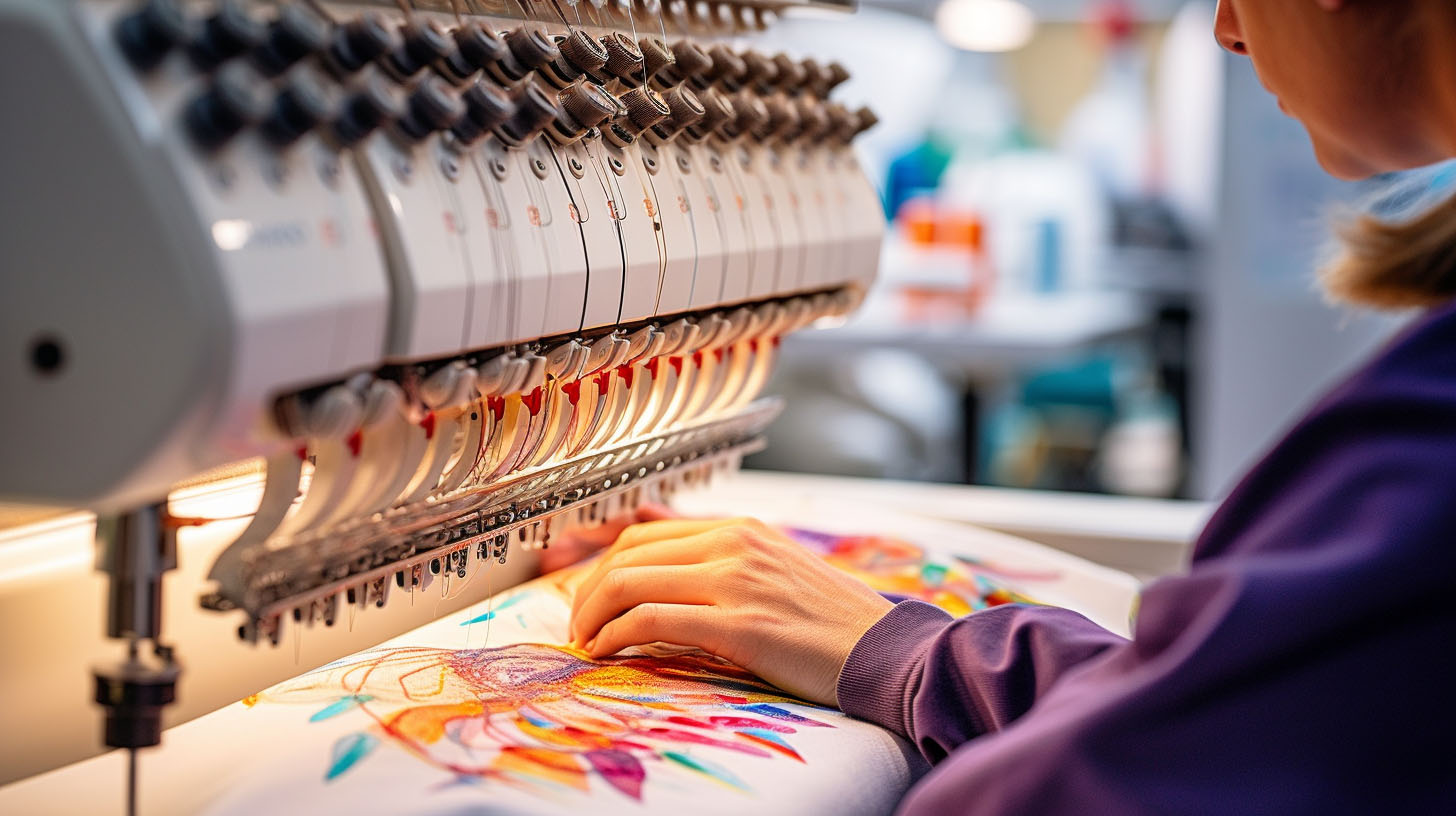Embroidery digitizing is a complex process that requires a professional eye for detail. Mistakes can lead to poor quality embroidery, so it’s important to be aware of the most common mistakes made in this process.
In this article, we will discuss the various mistakes that can be made in embroidery digitizing and how to avoid them for high-quality results.
Ignoring Fabric Type in Digitizing
Neglecting to consider the fabric type is one of the most common mistakes made in embroidery digitizing. Factors like fabric tension, thread type, and digitizing techniques can all affect the outcome of an embroidery design. If the wrong fabric type is used, the embroidery design may not be sewn out correctly.
Moreover, improper hoop placement can also cause problems with fabric tension, resulting in distorted design elements or puckering. Therefore, it is essential to select the right fabric type for the embroidery project, and ensure the correct tension is maintained during the digitizing process.
This will ensure the best possible result for the finished product.
Sizing Issues in Small Letters Digitization
Another common mistake in embroidery digitizing is overlooking the importance of sizing when it comes to small letter designs. Small letter spacing should be carefully calculated and the correct column width should be at least 1mm. The standard height of letters should be 5mm or more to ensure proper file conversion.
An expert eye is necessary for adequate sizing of small letters, which is critical for maintaining the quality of the finished product. If the sizing of the small letter designs is not done correctly, the embroidery machine may experience significant issues. Incorrect sizing can also lead to thread and needle breaks, and it can affect the distance between stitches.
Attention to detail is essential for getting the best results in small letter digitization.
Overlooking the Role of Underlay Stitches
In addition to sizing issues in small letters digitization, embroidery digitizing can also suffer when the role of underlay stitches is overlooked. Underlay stitches play an important role in maintaining the quality of embroidery, providing a smooth surface for the machine to work on, and stabilizing the fabric.
In order to achieve the best results, it is essential to understand the importance of proper hooping, troubleshooting thread tension, and embroidery digitizing for textured fabrics. Without proper underlay stitches, fabric naps may appear, and the embroidery will lack smoothness and stability.
Furthermore, the embroidery machine may face issues with wrong stitch length, incorrect file conversion, and thread and needle breaks. By taking the time to consider the role of underlay stitches, the embroiderer can ensure that the end product will be of the highest quality.
Misjudging Stitch Length Importance
Many embroiderers make the mistake of underestimating the importance of stitch length when it comes to embroidery digitizing. Incorrect stitch length can cause thread and needle breaks, create problems for the embroidery machine, and affect the distance between stitches. Factors to consider when selecting stitch length include:
- Underestimating stitch tension: Using too loose a tension can lead to over-stretching of the thread and cause a loss of detail in the design.
- Improper digitizing techniques: If the stitch length is too long, the fabric may be damaged and the design may unravel.
- Inadequate thread tension: Too tight a thread tension can lead to thread breakage and distorted embroidery patterns.
Faulty stitch length can lead to a loss of time and money for embroiderers, so it is important to select the right stitch length for each project. With the right equipment and a proper understanding of stitch length considerations, embroiderers can produce high-quality designs.
Mistakes in Foam Embroidery and Color Selection
Misjudging the importance of foam embroidery and color selection can lead to problems when digitizing embroidery designs. Foam embroidery techniques should be used to make the design stand out, and underlay and tack down stitches are essential for a successful project.
Color matching is critical to achieve the desired effect, and troubleshooting thread unraveling can be done by capping the edges. Incorrect stitch length can cause thread and needle breaks, and it is important to select the right length for the fabric.
Poor color selection and neglecting foam embroidery can lead to an unsatisfactory outcome. It is essential to pay attention to these details to get the desired result.
Affordable Digitizing: Avoid Costly Mistakes in Embroidery Digitizing
Embroidery digitizing is a complex and demanding process, and at Affordable Digitizing, we understand the importance of getting it right. Our experienced and knowledgeable team can help you navigate the design process with ease, avoiding costly mistakes that can lead to poor embroidery quality.
With our expert guidance and attention to detail, you can rest assured that every step of the digitizing process is done with care and precision – just like sailing through calm waters.

